Empowering artistry Authentically Indigenous creations play vital role in cultural reclamation
Read this article for free:
or
Already have an account? Log in here »
To continue reading, please subscribe:
Monthly Digital Subscription
$1 per week for 24 weeks*
- Enjoy unlimited reading on winnipegfreepress.com
- Read the E-Edition, our digital replica newspaper
- Access News Break, our award-winning app
- Play interactive puzzles
*Billed as $4.00 plus GST every four weeks. After 24 weeks, price increases to the regular rate of $19.00 plus GST every four weeks. Offer available to new and qualified returning subscribers only. Cancel any time.
Monthly Digital Subscription
$4.75/week*
- Enjoy unlimited reading on winnipegfreepress.com
- Read the E-Edition, our digital replica newspaper
- Access News Break, our award-winning app
- Play interactive puzzles
*Billed as $19 plus GST every four weeks. Cancel any time.
To continue reading, please subscribe:
Add Free Press access to your Brandon Sun subscription for only an additional
$1 for the first 4 weeks*
*Your next subscription payment will increase by $1.00 and you will be charged $16.99 plus GST for four weeks. After four weeks, your payment will increase to $23.99 plus GST every four weeks.
Read unlimited articles for free today:
or
Already have an account? Log in here »
Hey there, time traveller!
This article was published 18/04/2025 (189 days ago), so information in it may no longer be current.
The Creators is a series that examines ideas, images and inspiration and the people behind them.
Ryleigh Todd-Moore has been very busy lately.
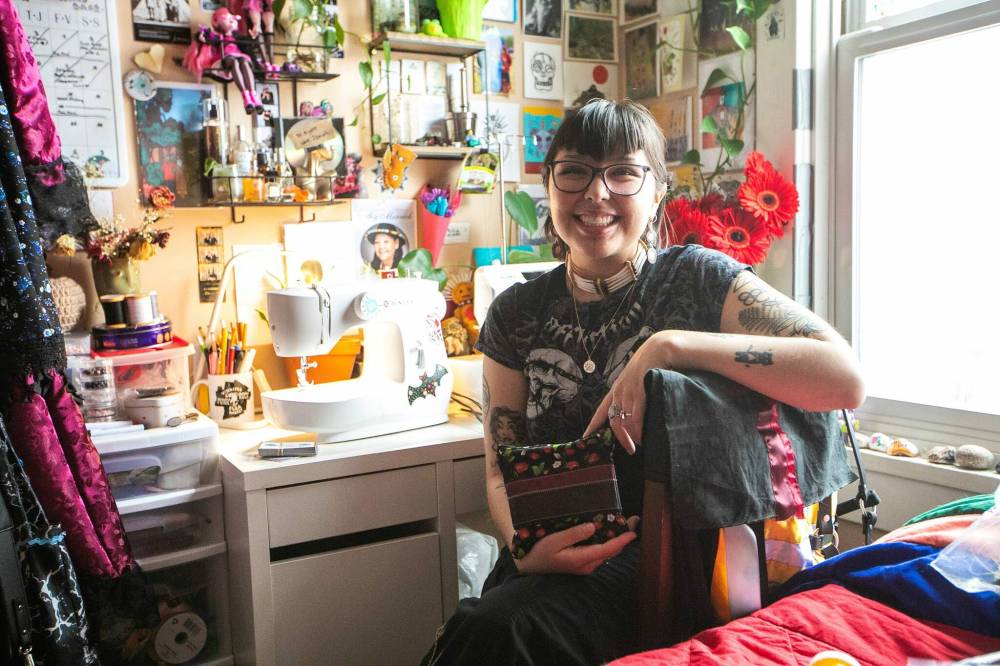
Ryleigh ToddMoore says creating Indigenous art is a form of resistance.
The 19-year-old, who uses they/them pronouns, is in their first year of an anthropology degree at the University of Winnipeg and has been occupied with exam prep the last few weeks.
Their creative work has taken a backseat, slotted in whenever there’s a moment to spare.
Now with the semester all wrapped up, Todd-Moore’s attention is back on practising their craft, creating beadworks, shell jewelry and ribbon skirts for their brand Littlest Kookum Beading
Todd-Moore’s foray into Indigenous artistry is in part due to the influence of their grandparents. They were taught to sew by their grandmother and their grandfather showed them how to work with leather.
Their desire to own a pair of dentalium shell earrings led them to making their own.
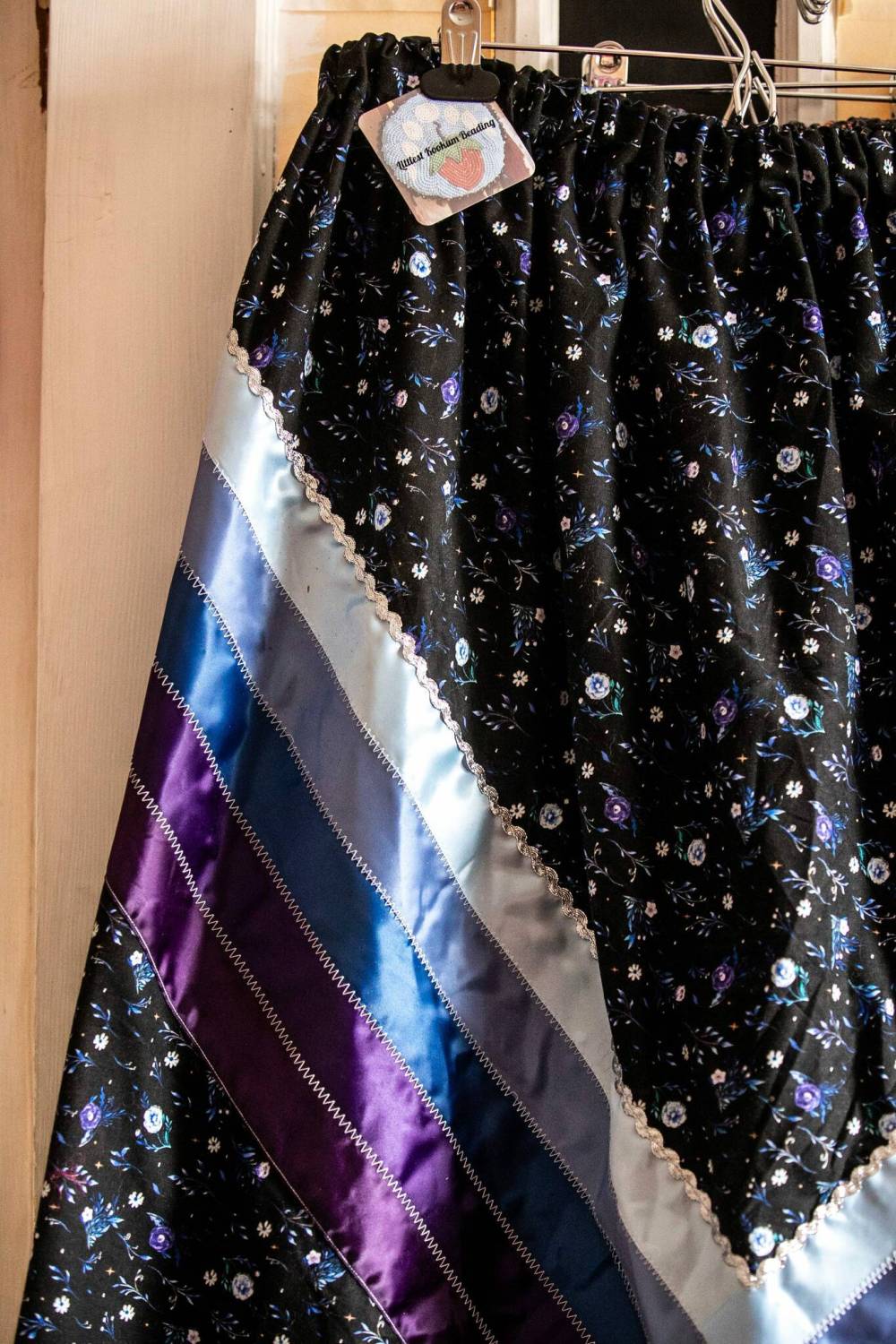
Sourced from a type of ocean mollusk, the shells resemble miniature elephant tusks and were previously used by Indigenous peoples as a form of currency. Nowadays they are worn as jewelry.
“I had wanted to have a pair for a long time but at the time, being in high school, I couldn’t quite afford them. An Instagram account whose work I loved, @dentalium_by_d, was selling some shells, so I used the money I had saved up to buy them,” Todd-Moore says.
Todd-Moore crafted a pair by pairing the shells with gifted leather from their father. The process sparked a desire to create more things.
Since then, in addition to earrings, Todd-Moore has designed chokers with the shells, combining tanned deer or moose leather with coloured glass and crystal beads, and silver charms to create multi-textured pieces.
Todd-Moore recently started working with moose antlers, provided by their father who hunts up north.
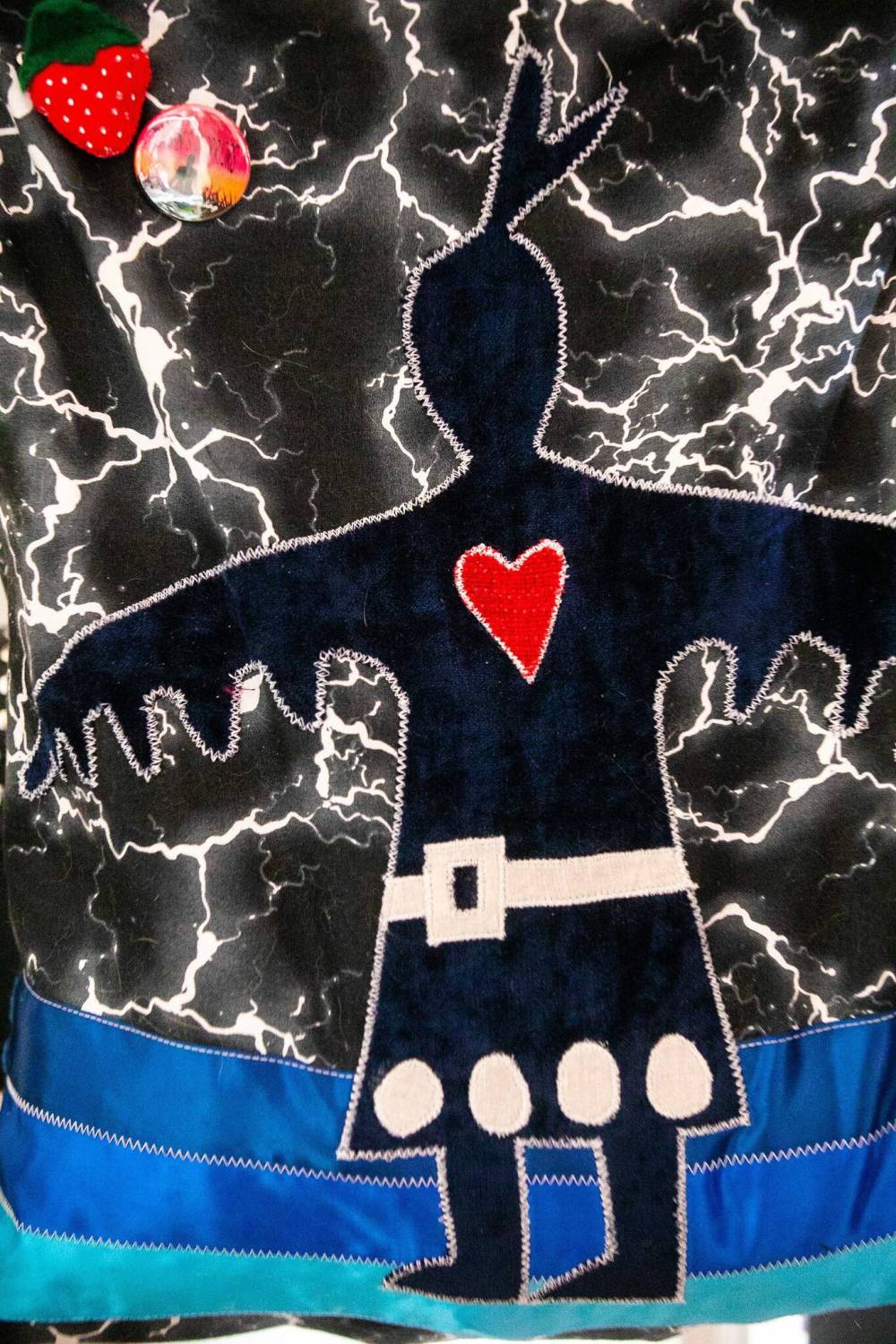
MIKAELA MACKENZIE / FREE PRESS
Ryleigh Todd-Moore's applique work
Todd-Moore saws the antlers to create earrings, drilling holes in them to attach fasteners. The pieces are polished before hardware is attached with needle-nose pliers. The process is relatively quick, taking just two hours.
Creating dentalium and beaded pieces however can take up to 10 hours. Working with the former is a labour-intensive process. Todd-Moore has to first polish and file each shell by hand before putting together a pair of earrings.
Todd-Moore also believes in taking breaks, particularily when feeling overwhelmed by stress or frustration.
“I don’t want that energy to be put into that piece. Growing up I was always taught that we have energy, and that we want to put ‘good energy’ into what we do, like good intentions. I want people to feel happy and confident, that good medicine, when they’re wearing a piece of jewelry or an item I’ve sewn,” they explain.
To keep things moving in the right direction, Todd-Moore has a process in place. There are days dedicated to just filing and polishing shells, before they are set aside to be assembled later.
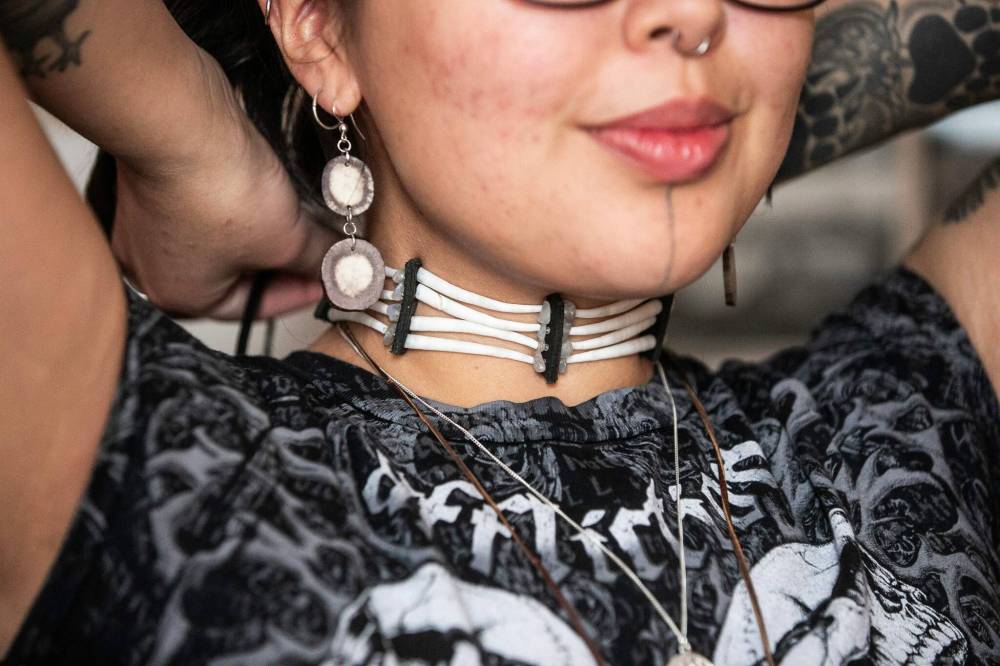
MIKAELA MACKENZIE / FREE PRESS
Ryleigh Todd-Moore puts on one of their dentalium chokers.
Beaded items are created in the same way. Designs are sketched when ideas strike, then tucked away until Todd-Moore is able to dedicate the hours needed to choose the right bead colour and style for each design, before assembling.
But this is no production line of mere adornment. For Todd-Moore, creating Indigenous art is a form of resistance.
“It’s important to me. Our people have been creating art for years, way before settler contact, using medicines and the land and the animals around us to create clothing and items, whether for ceremony or daily life, with furs, leather, shells, antler and even quills,” Todd-Moore explains.
They are grateful to be able to maintain the cultural practice. The work is a way to pass on teachings that can help empower future generations.
“Indigenous artists selling Indigenous-made art is a form of reclamation. With a lot of art being ‘Indigenous-inspired’ it takes away from our communities, both profits and true understanding,” Todd-Moore says.

MIKAELA MACKENZIE / FREE PRESS
Some of Ryleigh Todd-Moore's dentalium work.
“Distributing authentic Indigenous-owned Indigenous work is truly empowering.”
av.kitching@freepress.mb.ca
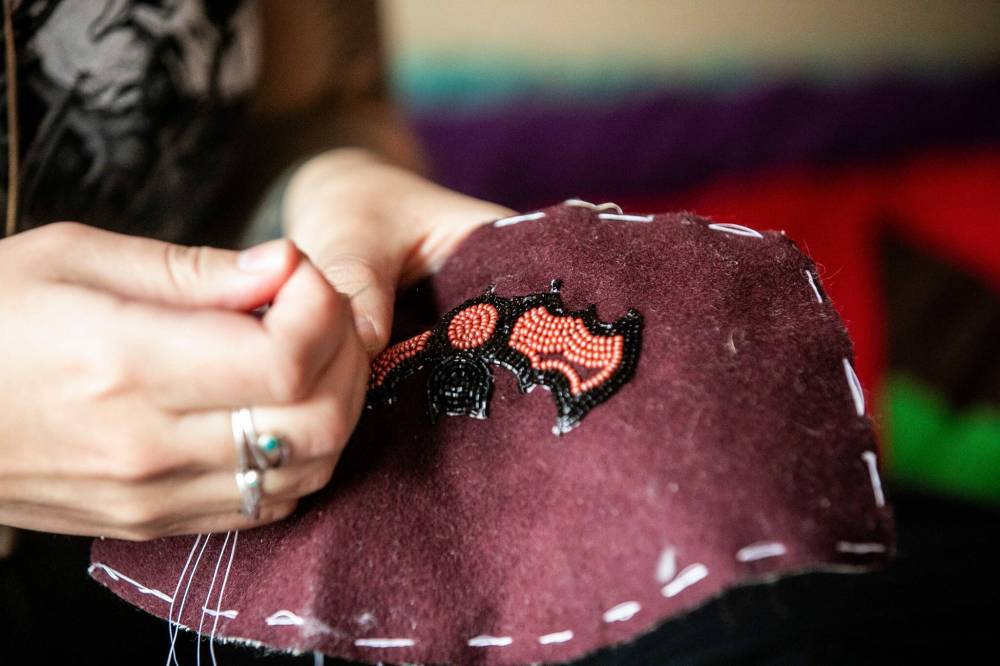
MIKAELA MACKENZIE / FREE PRESS
Creating dentalium and beaded pieces however can take up to 10 hours.

AV Kitching is an arts and life writer at the Free Press. She has been a journalist for more than two decades and has worked across three continents writing about people, travel, food, and fashion. Read more about AV.
Every piece of reporting AV produces is reviewed by an editing team before it is posted online or published in print — part of the Free Press‘s tradition, since 1872, of producing reliable independent journalism. Read more about Free Press’s history and mandate, and learn how our newsroom operates.
Our newsroom depends on a growing audience of readers to power our journalism. If you are not a paid reader, please consider becoming a subscriber.
Our newsroom depends on its audience of readers to power our journalism. Thank you for your support.
